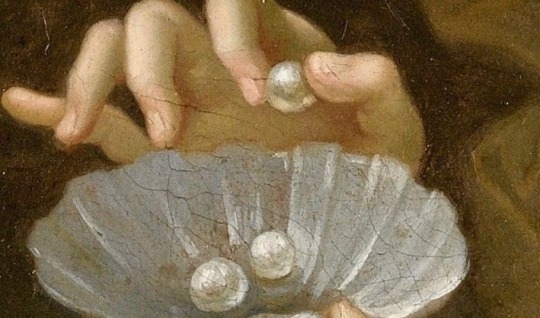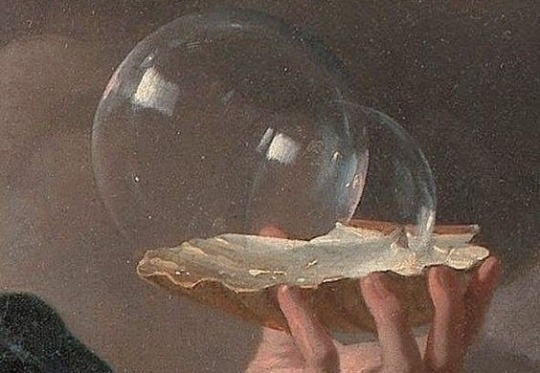Photo

Auguste Rodin (1840 - 1917) - Etude de mains
1K notes
·
View notes
Text

A vintage postcard of the shrine of Our Lady in the church of Our Lady of the Assumption & St. Gregory in Warwick Street in Soho, London.
The statue was later placed on a new altar, which incorporated some of the many votive hearts offered to Mary at the shrine over the years.
1K notes
·
View notes
Photo



A silver mounted notebook with horizontal sundial ( latitude 53° North) , with compass and mirror, ca, 1575 by unkown
11K notes
·
View notes
Text

Medieval Amulets - Italian Cimaruta
The cimaruta is an Italian folk charm, a type traditionally worn around the neck or hung above an infant's bed to ward off the evil eye. several small apotropaic charms (some of which draw upon Christian symbolism), with each individual piece attached to what is supposed to represent a branch of rue—the flowering medicinal herb for which the whole talisman is named, "cimaruta" being a Neapolitan form of cima di ruta: Italian for "sprig of rue".
12 notes
·
View notes
Text

Popular amulets and talismans used to ward off the evil eye include the hamsa, while Italy (especially Southern Italy) employs a variety of other unique charms and gestures to defend against the evil eye, including the cornicello, the cimaruta, and the sign of the horns.
19 notes
·
View notes
Text

~ Sleeping Eros.
Culture: Roman
Date: A.D. 2nd century
Medium: Carrara marble
220 notes
·
View notes
Text

A vintage postcard of the shrine of Our Lady in the church of Our Lady of the Assumption & St. Gregory in Warwick Street in Soho, London.
The statue was later placed on a new altar, which incorporated some of the many votive hearts offered to Mary at the shrine over the years.
1K notes
·
View notes
Photo

Henri Fantin-Latour, White and Yellow Roses in a Tall Vase, 1876
567 notes
·
View notes
Photo


~ Fragment of a hanging: Ostiarius Drawing a Curtain. Place of origin: Eastern Mediterranean, probably Egyptian Period: Late Roman Date: ca. A.D. 5th century Medium: Linen; tapestry-woven; linen and wool yarns.
328 notes
·
View notes
Photo

Eugène Atget, hôtel du marquis de Lagrange, Paris (1901)3d
154 notes
·
View notes
Photo

Title: Eyn Newe kunstlich moetdelboech alle kunst
Publisher: Peter Quentel (German, active Cologne, 1518–46) , Cologne
Date: 1532
Medium: Woodcut
Dimensions: Overall: 5 11/16 x 8 1/16 in. (14.5 x 20.5 cm)
Classifications: Books, Prints, Ornament & Architecture
Credit Line: Harris Brisbane Dick Fund, 1924
Published by Peter Guentel, Cologne. The only recorded copy (incomplete) of Peter Guentel's second edition of this model book. Illustrated title page and 31 pages of designs. The first edition of this second book of Peter Guentel appeared in 1529 according to Lotz who records 2 complete copies- 24 leaves, sigs. a - f 4. Althought incomplete, this is the only recorded copy of the second edition. A number of the patterns are copied fom the second edition of Schonsperger's first book (Lotz 1 b) after Schonsperger had abandoned printing on only one half of the page. Several more were adaptations of patterns in Schonspereger's last book (Lotz 5) drawn by Anton Woensam von Worns according to Lotz as are also the scrolling leaves and flowers and renaissance ornament on the verso of the title, leaves 2 - 5. Among the missing leaves are 3 pp. of alphabet, based on Schonsperger's and the arms of Cologne attr. to von Worms which are in the 1544 Guentel in MMA (22.84.1). 16 leaves (should be 24), Sigs: (a)-d 4. The Paris ed. B.A. copy: a 3 - b -f 4 Lesoufache 318. This is undoubtedly the Berg copy sold at auction Feb. 1922, the dealers writing in the front is taken from the Berg cat. description. Book catalogue page describing this volume in German loose in back (prior to 1924?), tyepwritten carbon copy of notes concerning this volume tipped in at front of book. Bound in blind stamped brown leather, spine stamped and gilded. Additional notes on pattern sources in graphite on back flyleaf verso.
1 note
·
View note
Photo

Title: Fiore D'Ogni Virtu Per le Nobili Et Honeste Matrone Designer: Isabella Catanea Parasole (Italian, ca. 1565/70–ca. 1625)
Publisher: Antonio Fachetti , Rome
Date: 1610 Medium: Woodcut Dimensions: Overall: 7 7/8 x 10 1/4 in. (20 x 26 cm) Classifications: Books, Prints, Ornament & Architecture
Title page with Spanish arms, dedication with woodcut initial letter, 37 pages of designs, Spanish arms on last page.
#1600s art#woodcut#books#print#ornament#Antonio fachetti#rome#fiore d'ogni virtu per le nobili et oneste matrone#ancient rome#italian#Isabella Catanea Parasole
2 notes
·
View notes
Photo

Pair of Gloves 1880-1900 (made) PLACE OF ORIGIN France (made) ARTIST/MAKER Unknown
By the end of the 19th century, wearing of gloves indoors was declining except for evening dress where they were required accessories. In the 1880s and 1890s, these grew longer, extending over the elbow to the upper arm. The combination of a kid leather hand with a silk net or mesh arm became a popular style. They were cheaper than full leather gloves, easier to pull on and allowed a greater variety of colour and decoration.
These gloves have a standard kid hand which has been sewn to an arm of silk net. The net is appliquéd with silk satin and thread in a design of butterflies. At the top of each arm a silk ribbon is threaded through a series of eyelets in the net.
5 notes
·
View notes




